Smiling at Elephants

Peregrina's Journey
Peter and Margie Benziger
Thu 8 Mar 2012 08:10
HAVE YOU SMILED AT AN ELEPHANT TODAY?
Did you know elephants can smile?
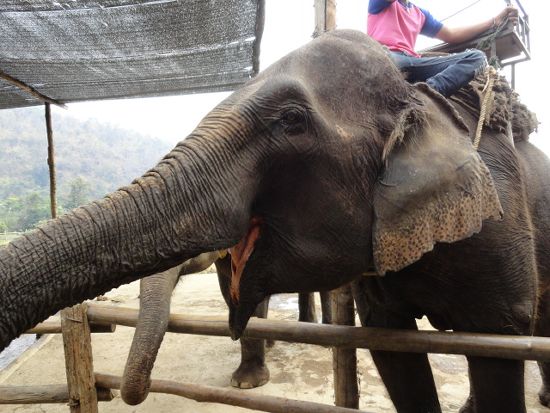
Neither did Margie and I until we visited and
elephant camp outside Chaing Mai in northern Thailand. It took a two hour truck
ride and an hour hike through rice fields to arrive but the elephant’s smile
was worth it!
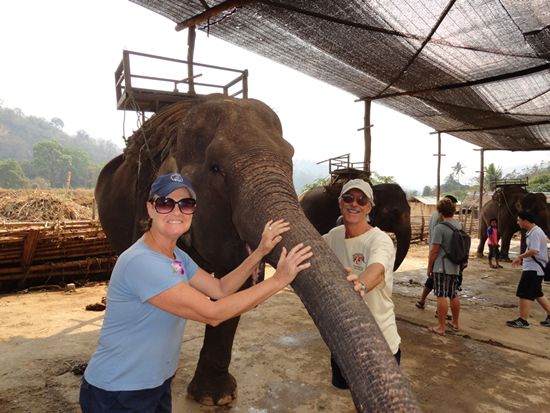
The elephant is a very powerful figure in Thai
culture. Elephant images can be found in religious statues, wood carvings and
paintings. The elephant even appeared on the Thai national flag until 1917. Elephants represent power and peace.
They are also key to royal pageantry. Kings chose the biggest, most magnificent
elephants for royal ceremonies and processions.
National
Elephant Day “Chaang Thai” is
celebrated each year to honor, support and pay respect to this wonderful animal
which is so much part of Thailand's heritage and culture.
When we visited a WAT (Buddhist Temple) in Prae, we
came across a courtyard of elephant statues.
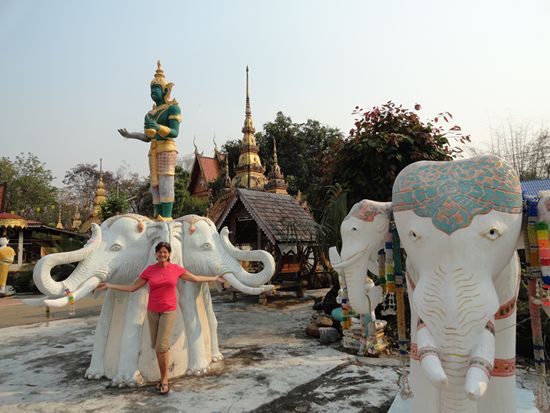
Even in public parks you will come across elephant
tributes. This round circle had over 1000 elephant statues.
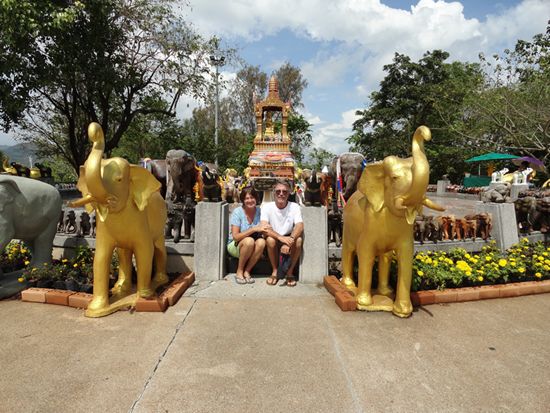
The elephant is an awesome form of jungle transport because
they have wide feet which distribute their weight without crushing the ground.
The bottoms of their feet are just huge! With the combined surface area of all four
feet, elephants actually put less weight on the ground per square centimeter
than a deer!
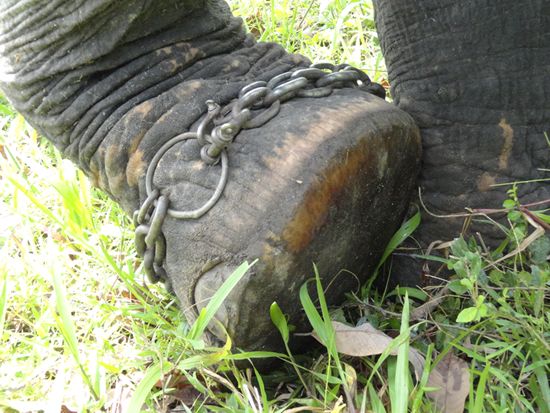
Margie and I
rode an elephant along a river bottom and down a muddy slope and the enormous
feet kept us going where a brand new $50,000 four wheel drive Jeep would have
gotten stuck fast. And don’t underestimate the top speed because an elephant
can run at up to 23 kilometers per hour for short distances.
Elephants were the super weapon of south Asian
armies before the advent of tanks and big guns. Large platforms were mounted on
the elephants from which spears and arrows were launched. It is interesting to
know that in the late 17th century a Thai King had 20,000 war elephants trained for battle. Can you imagine the sight of a full grown war
elephant running at 23 kilometers per hour into an opposing group of solders
simply standing on the jungle floor?
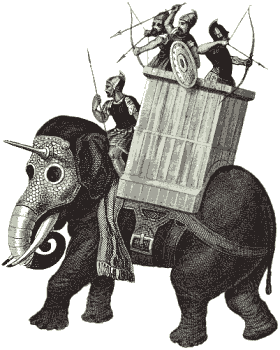
For centuries, the elephant’s main work
has been in the forest pushing, pulling and carrying logs. One advantage is
that you don’t have to build a road for elephants…they can go wherever they
want! A “mahout” is an elephant
caretaker/trainer. Since elephants have
a working life of more than 50 years, on average, a mahout father and son will often
train a baby elephant together so that, when the father is too old, the son can
continue working with the adult elephant.
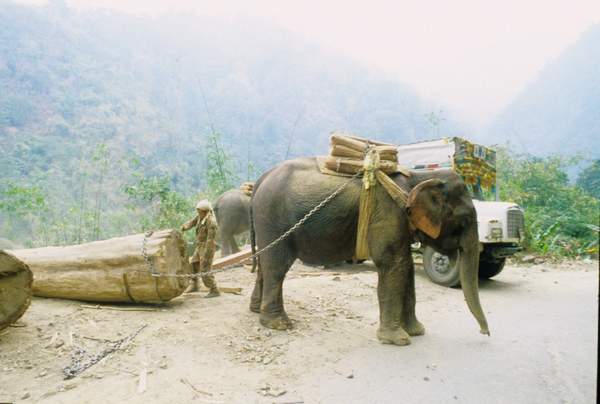
Modern logging technology and a reduction in illegal
logging in Thailand means unemployment for many elephants. As the economic incentive to keep elephants
has diminished, the elephant population has fallen. In addition, large numbers
of bull elephants have been killed for their ivory tusks. In 1900, there were
approximately 100,000 elephants in Thailand, in 1952 there were 14,000 and by
2000 the number had fallen to 5,800 elephants.
So
now is a good time to learn more about elephants since they seem to be packing
their trunks and heading for elephant heaven. Did you know that elephants…
-Weigh
about 3.5 tons
-Have
skin so sensitive they can feel a fly on it
-Live
to be 90 years old
-Carry
up to 2 tons of load pushing and pulling trees
-Eat
around 250 kilograms of various foods and drink 200 liters of water a day
-Sleep
only 4 hours a day (because they must eat 20 hours per day)
-Lay
down to sleep but do not use a pillow
Now
that you know more about elephants, I recommend you take the time to go for an
elephant ride. Here is a picture of our
friends Jim and Barbara taken from the elephant we were riding in front of them.
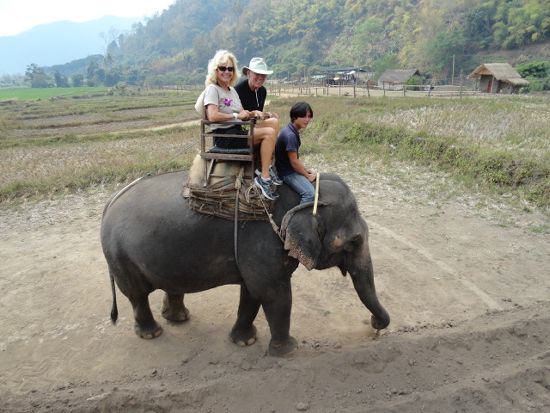
So,
next time you see an elephant, give him/her a big smile. They will, undoubtedly,
smile back. You won’t forget that elephant’s super-sized grin and, as you know,
an elephant will never forget a friendly face either!